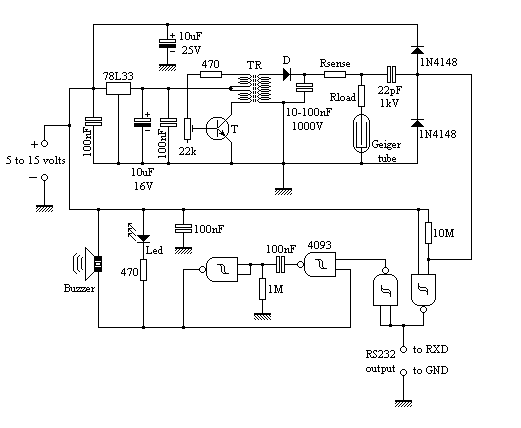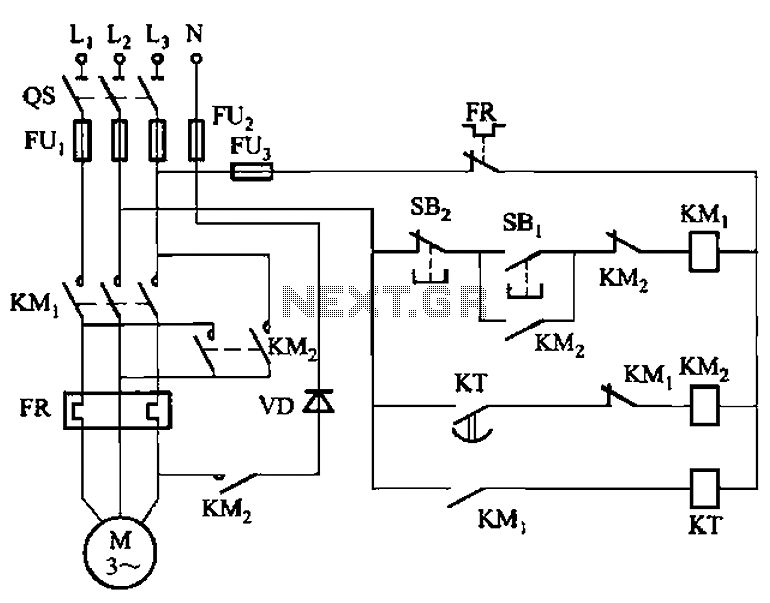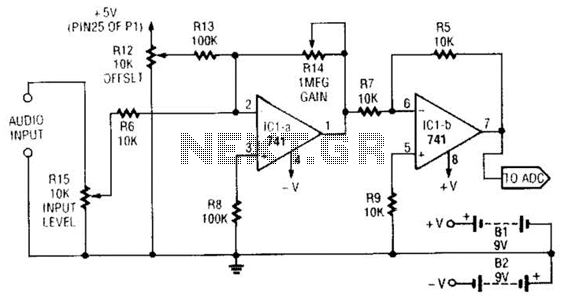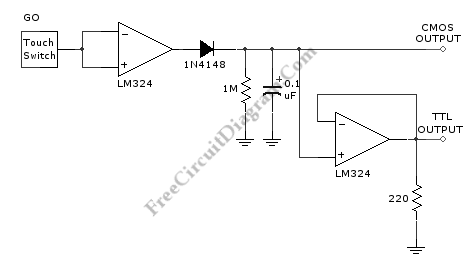
Hammond Commodore MIDI Interface
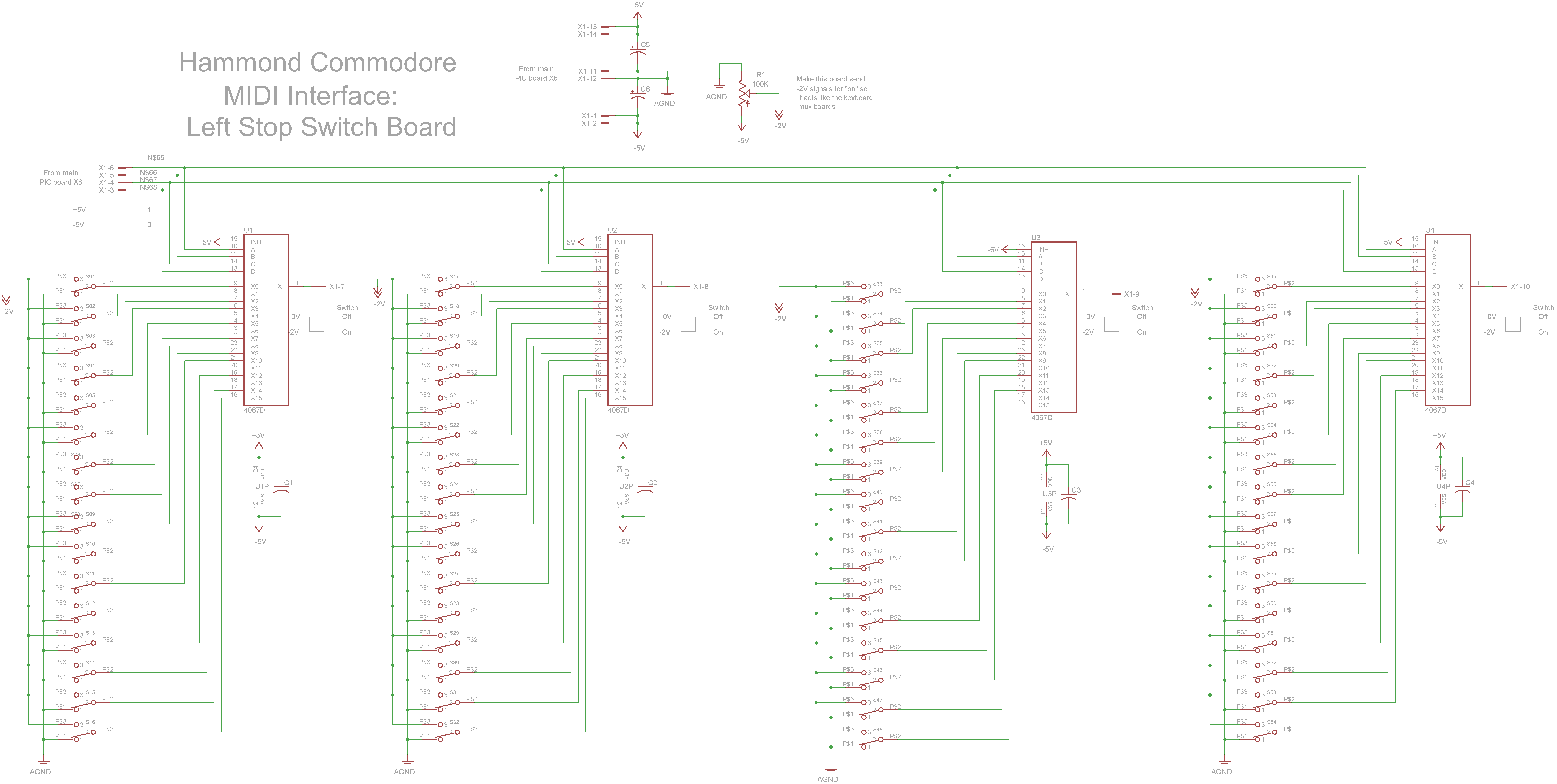
The schematic circuit board features switches that output -2V when activated and 0V when deactivated. Four 4067 multiplexers combine the 64 switch signals into 4 signals that return to the main PIC board.
The circuit design incorporates a series of switches, each functioning as a binary input that determines the output voltage level. When a switch is in the "on" position, it generates a consistent output of -2V, while in the "off" position, the output is 0V. This voltage differentiation is crucial for the subsequent processing stages.
The four CD4067 analog multiplexers serve a vital role in managing the numerous switch outputs. Each multiplexer is capable of handling 16 input signals, allowing for the effective consolidation of the 64 switch outputs into 4 distinct signals. This is accomplished through the selection lines of the multiplexers, which are controlled by the main PIC microcontroller. The microcontroller can select which of the 64 switch signals to route through the multiplexers, thus significantly reducing the number of lines required to communicate with the PIC board.
The integration of these components ensures efficient signal management and processing, allowing for a streamlined approach to handling multiple inputs from the switches. The design is particularly useful in applications where space and efficiency are paramount, enabling complex control systems to be implemented with minimal hardware. Proper attention to the power supply and grounding is essential in this circuit to prevent noise and ensure reliable operation of the multiplexers and the PIC microcontroller.Here is the schematic circuit board. Each switch puts out -2V when it`s on and 0V when it`s off. The four 4067 chips multiples the 64 switch signals into 4 signals that go back to the main PIC board. 🔗 External reference
The circuit design incorporates a series of switches, each functioning as a binary input that determines the output voltage level. When a switch is in the "on" position, it generates a consistent output of -2V, while in the "off" position, the output is 0V. This voltage differentiation is crucial for the subsequent processing stages.
The four CD4067 analog multiplexers serve a vital role in managing the numerous switch outputs. Each multiplexer is capable of handling 16 input signals, allowing for the effective consolidation of the 64 switch outputs into 4 distinct signals. This is accomplished through the selection lines of the multiplexers, which are controlled by the main PIC microcontroller. The microcontroller can select which of the 64 switch signals to route through the multiplexers, thus significantly reducing the number of lines required to communicate with the PIC board.
The integration of these components ensures efficient signal management and processing, allowing for a streamlined approach to handling multiple inputs from the switches. The design is particularly useful in applications where space and efficiency are paramount, enabling complex control systems to be implemented with minimal hardware. Proper attention to the power supply and grounding is essential in this circuit to prevent noise and ensure reliable operation of the multiplexers and the PIC microcontroller.Here is the schematic circuit board. Each switch puts out -2V when it`s on and 0V when it`s off. The four 4067 chips multiples the 64 switch signals into 4 signals that go back to the main PIC board. 🔗 External reference

